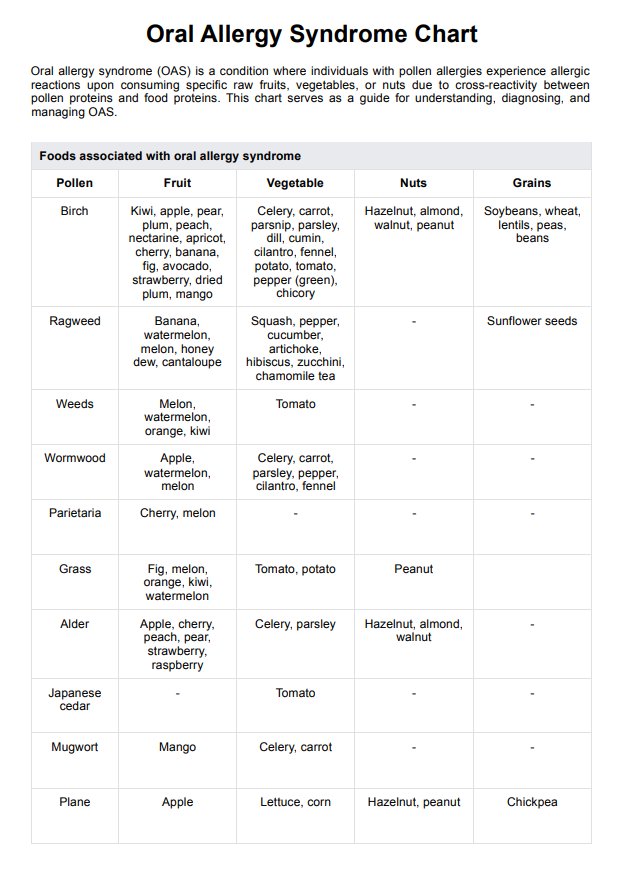Oral allergy syndrome is treated by avoiding raw foods that trigger reactions and substituting them with cooked or processed alternatives. In cases of severe symptoms, antihistamines or other medications may be prescribed, and patients should be educated on recognizing and managing allergic reactions.

Oral Allergy Syndrome Chart
Discover more about Oral Allergy Syndrome (OAS) with Carepatron comprehensive chart, outlining common triggers, symptoms, and management options.
Oral Allergy Syndrome Chart Template
Commonly asked questions
The Oral Allergy Syndrome Chart identifies potential food triggers linked to pollen allergies during consultations. It is particularly valuable when patients with allergies, such as a birch pollen allergy, report severe allergic reaction symptoms.
Healthcare professionals use the chart to document cross-reactive foods and symptoms linked to what is called oral allergy syndrome. It serves as a guide for diagnosing oral allergy syndrome, often triggered by allergens like birch tree pollen and helps in patient education and management.
EHR and practice management software
Get started for free
*No credit card required
Free
$0/usd
Unlimited clients
Telehealth
1GB of storage
Client portal text
Automated billing and online payments











